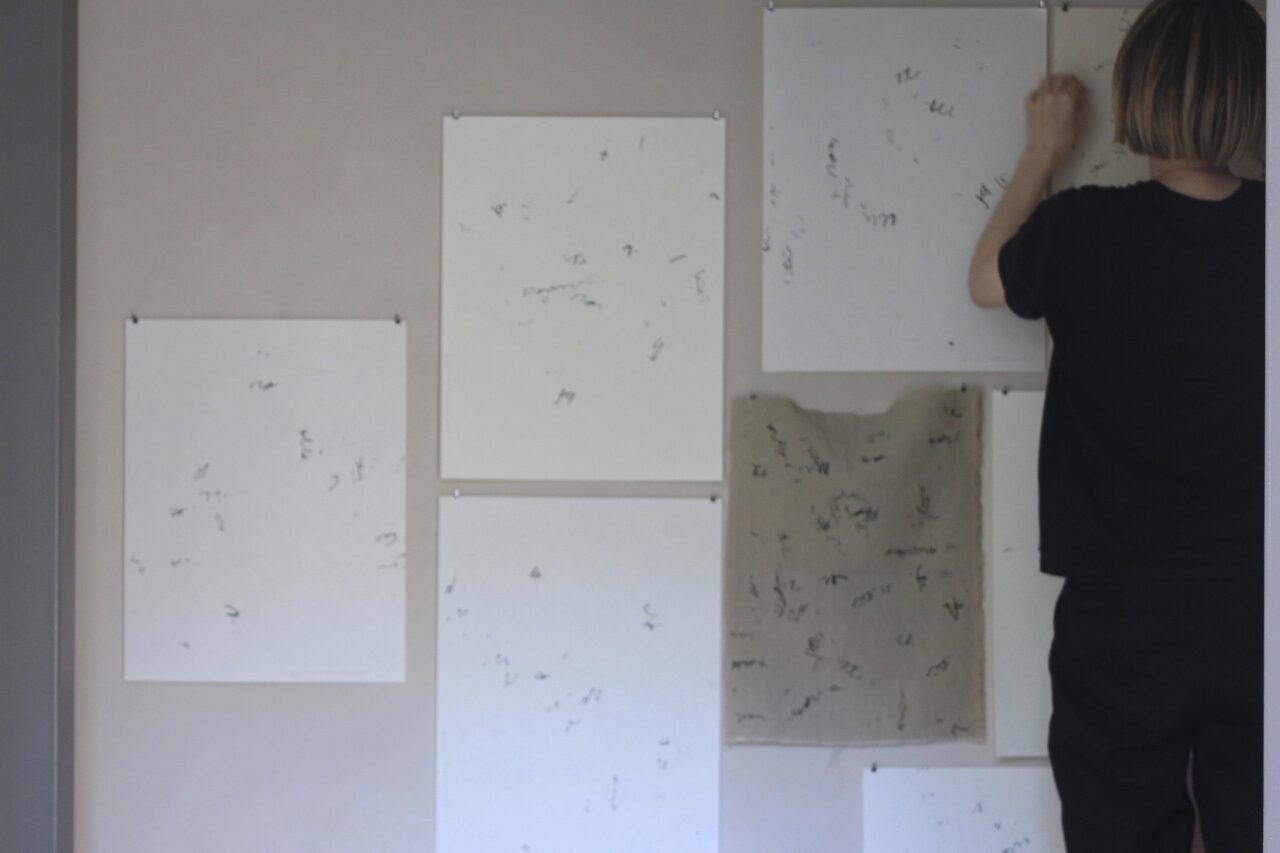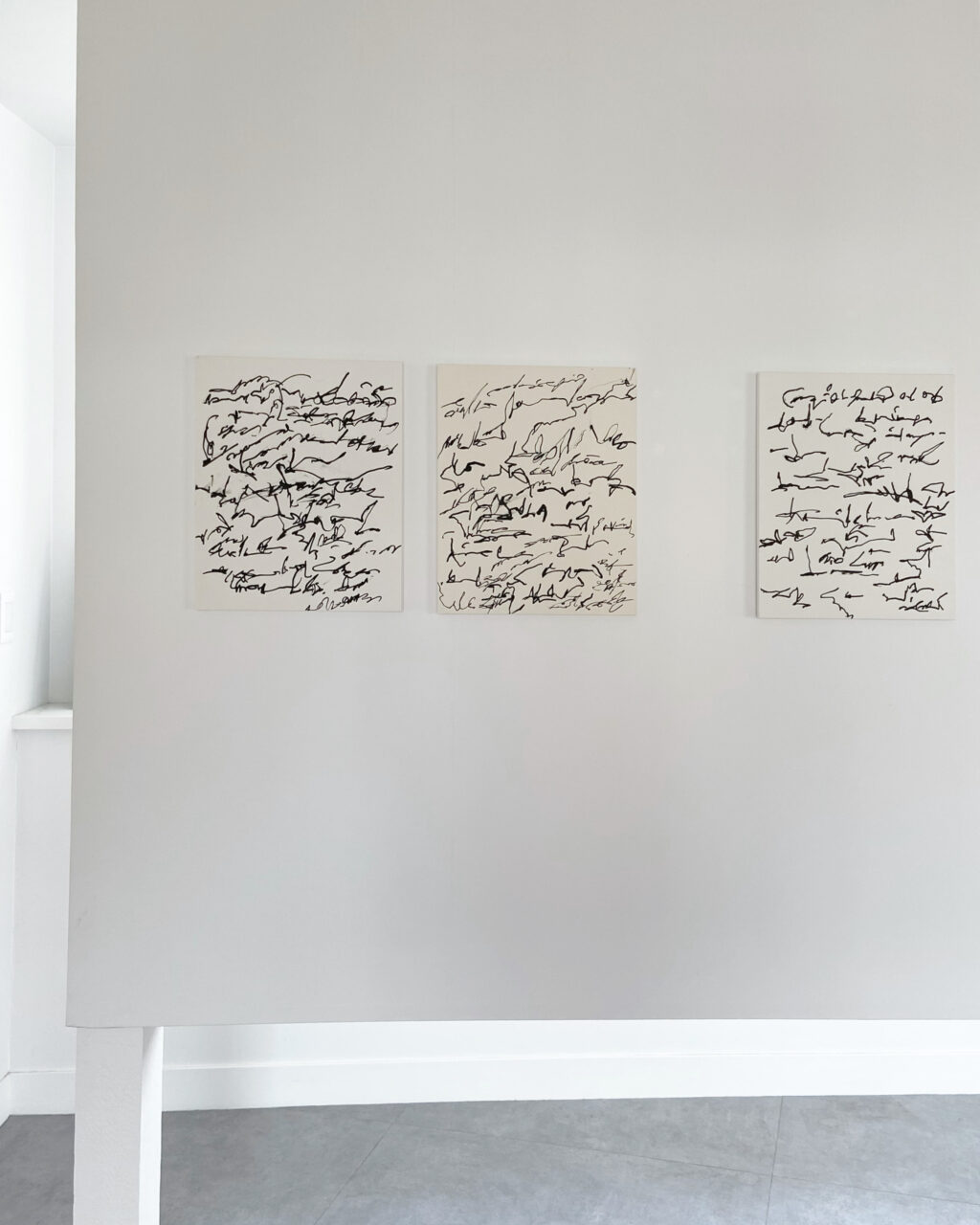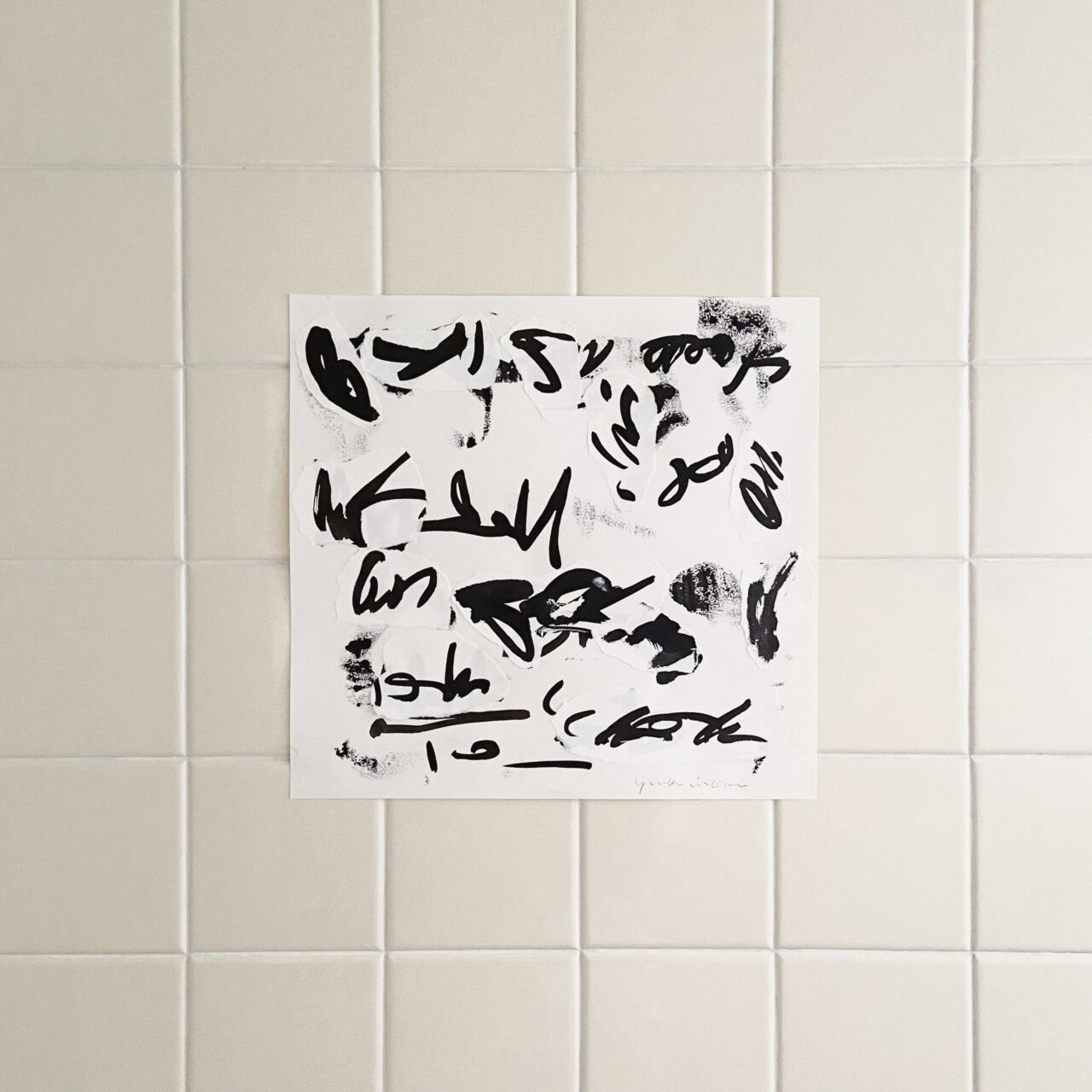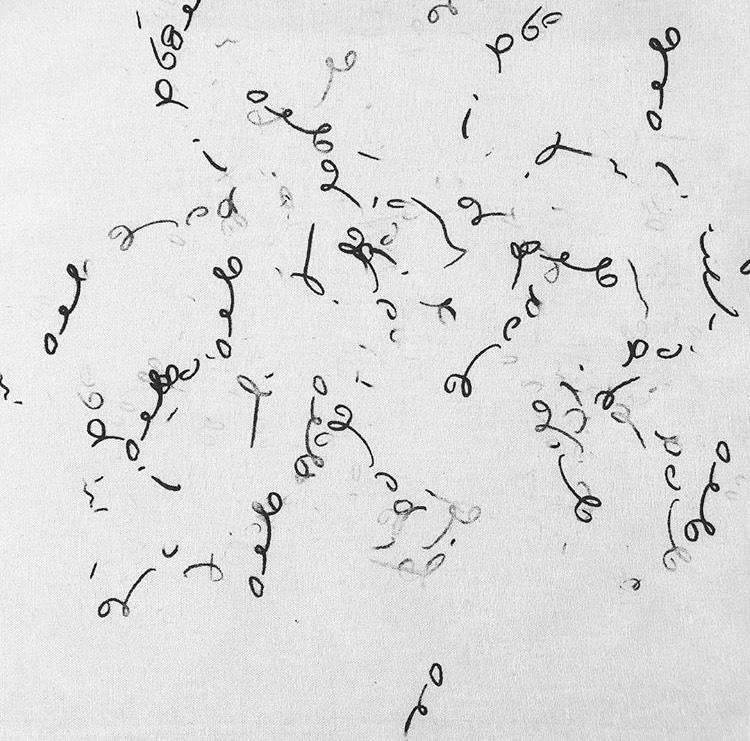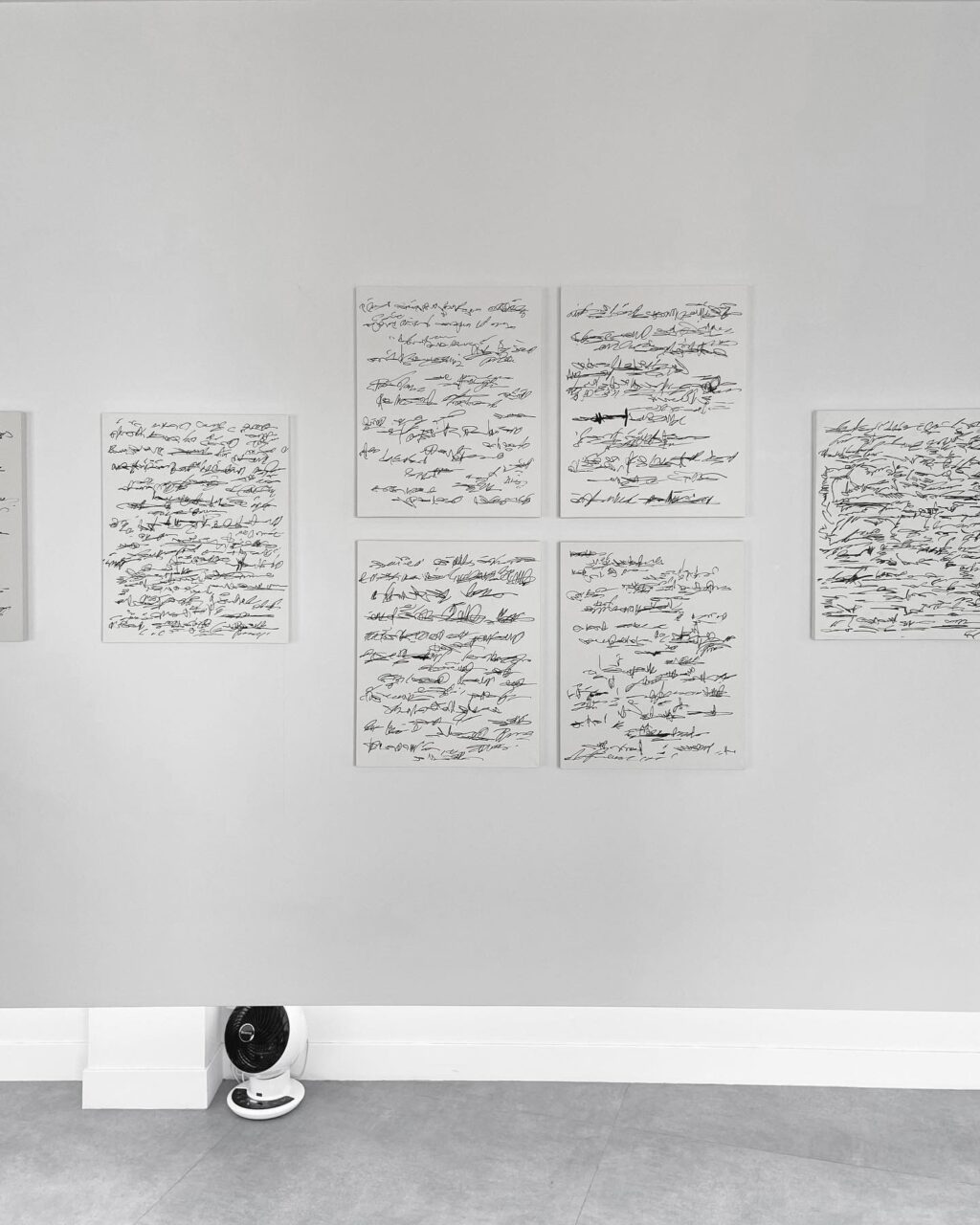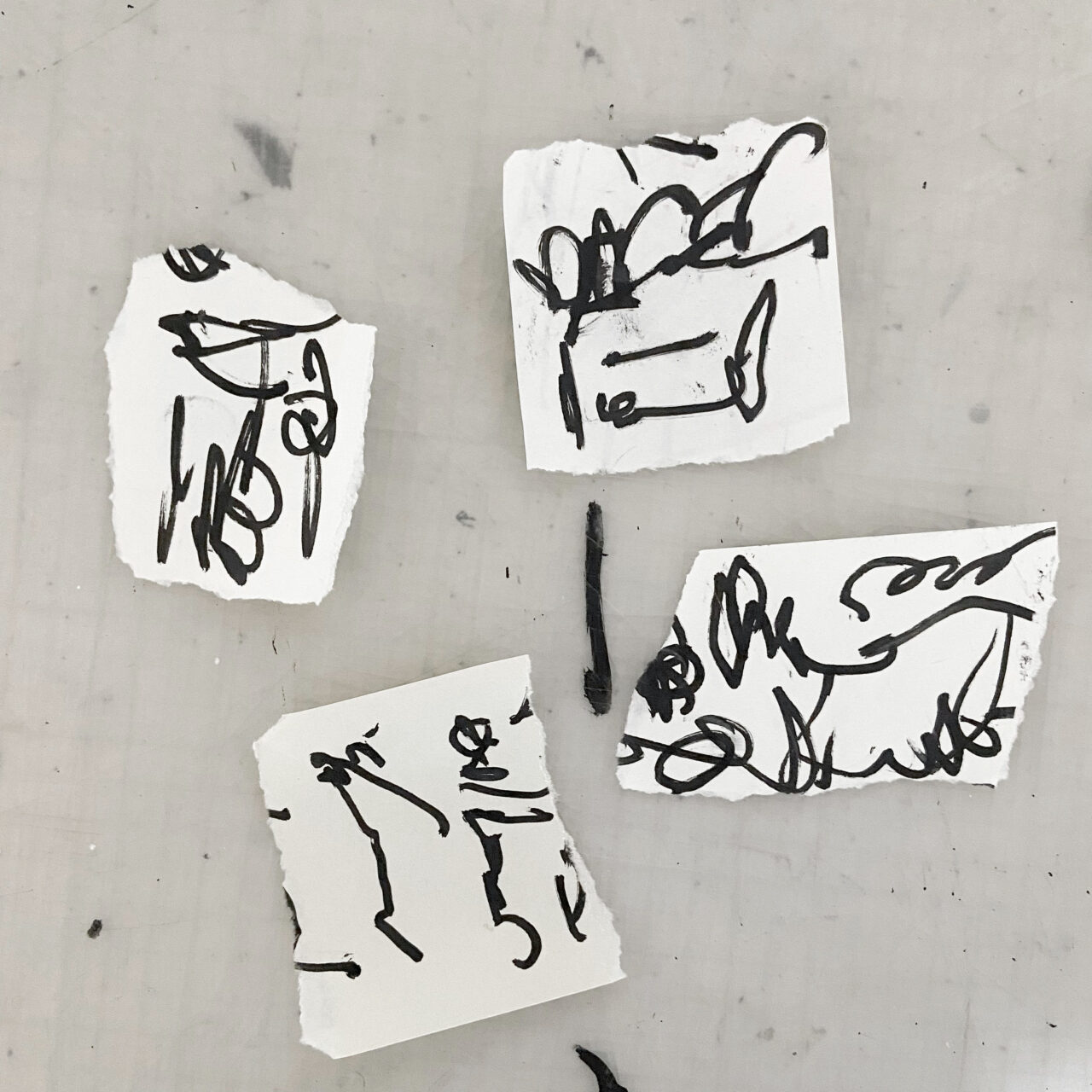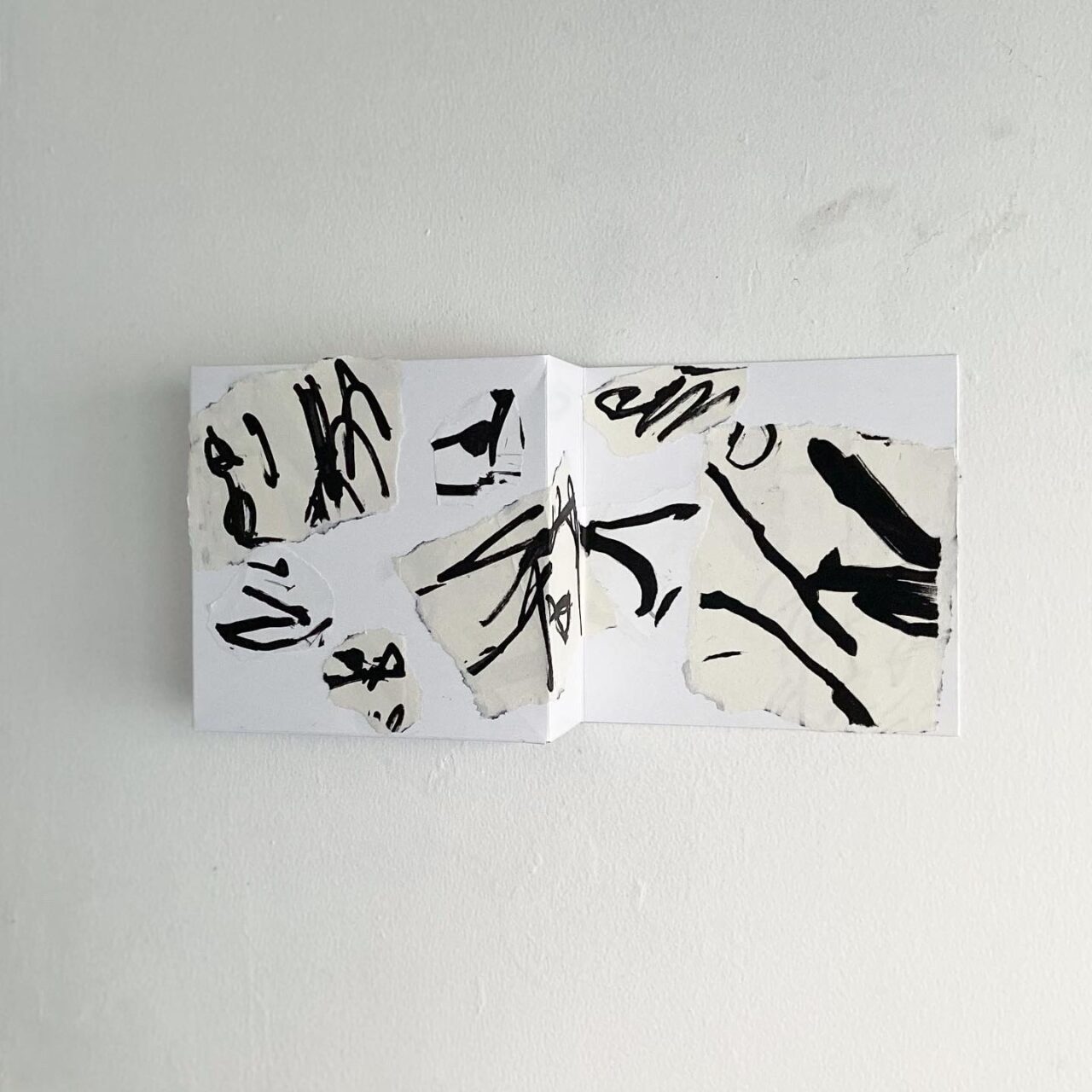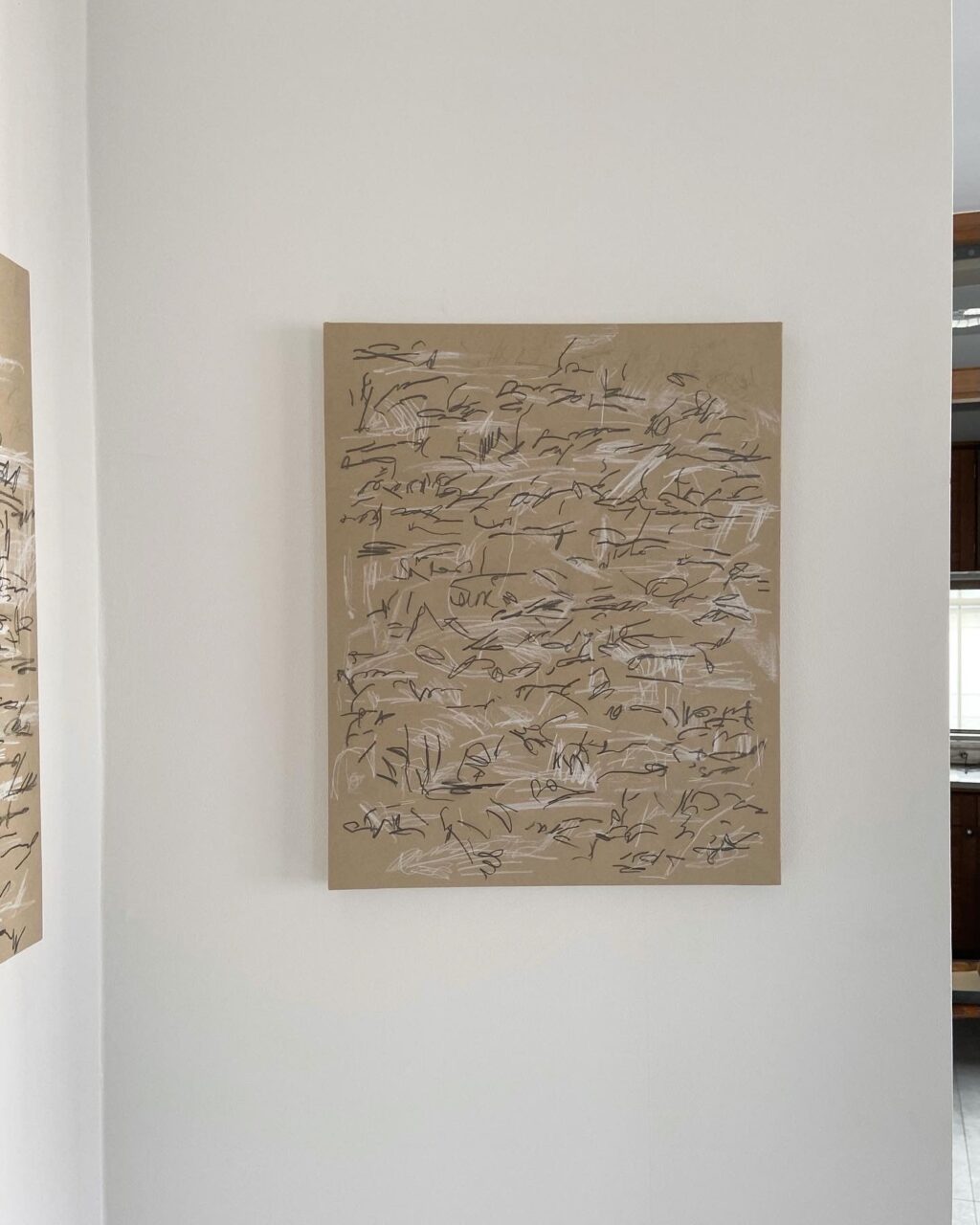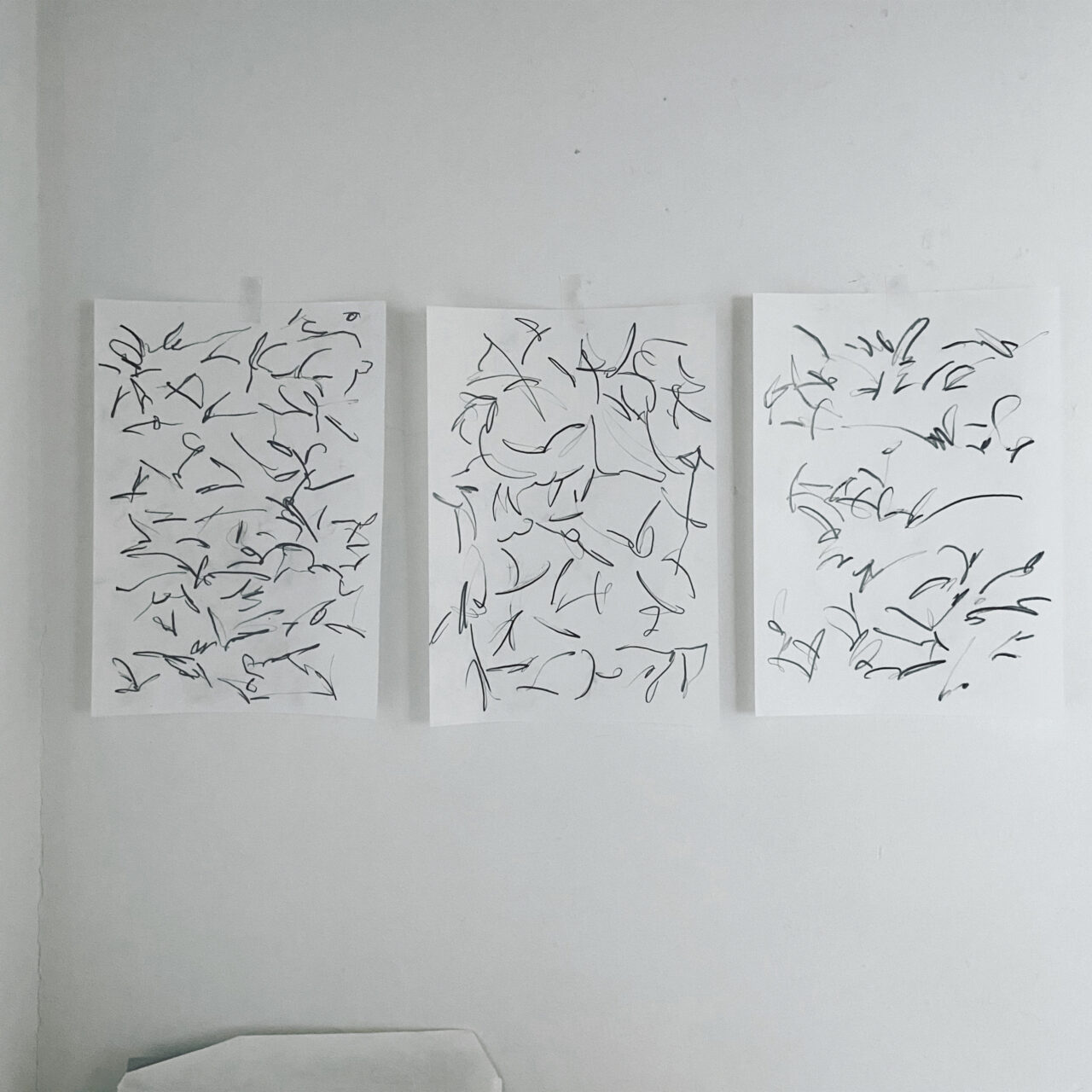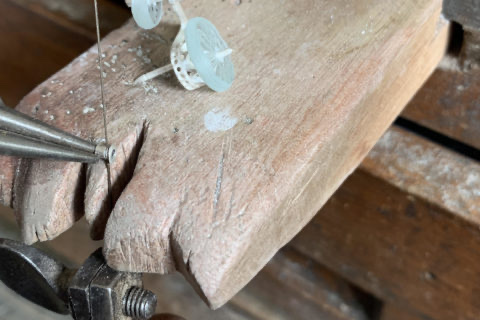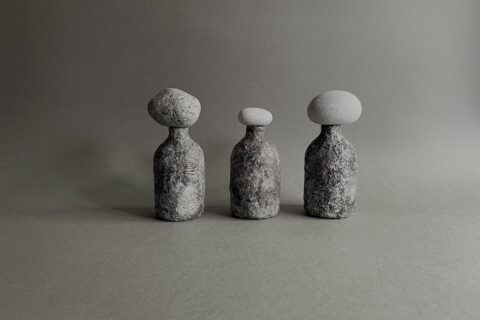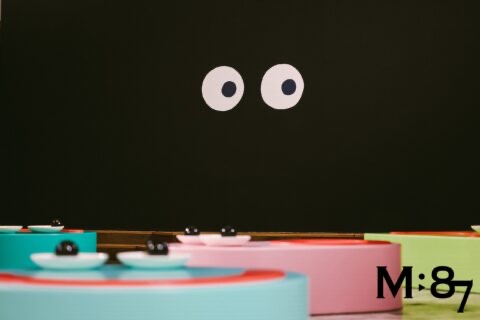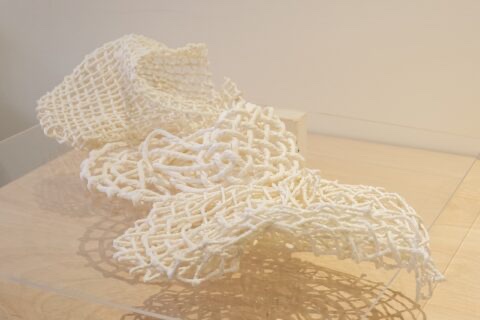重複、拆解、組合,藝術家三神由紀(Yuki Mikami)習慣把看到的事物都換成平面的狀態,一層一層地把事物分解成最簡單直接、設計最基礎的元素之一——線條。「對於眼前的風景,我會無意識地看成平面,繼而觀察形狀、配色和留白等之間的平衡。」三神認為日常生活各方面都跟創作有所聯繫,例如在晾衣服時,三神會考量到顏色的平衡,並以漸進色來排列衣服。在佈置飯桌時,她也會思考配合菜式的餐具。這種一絲不苟、看待事物的習慣,與她簡樸隨性的畫風有著美妙的平衡。
偏好手繪的三神由紀,畢業後自學繪畫,因為抱著「把自己的感覺和觀點表現出來」的想法而成為藝術家。剛出道時,她仍會使用彩色來繪畫,但漸漸地,畫紙上只剩下黑、白兩色,令筆下的線條更簡潔分明,也成為她標誌性的藝術風格。「對我來說,美的線條並不只是以精確而漂亮地畫出來的。這種美,還包含了線條所展現的表情和平衡,以及旁邊留白的部份。」她的〈Part of Life〉系列,畫下日常生活中的各種物品,以線條記錄下它們的形態。「那個時期,我將自己日常生活中的各種形態逐少逐少以畫筆記錄下來。在這之前,我幾乎沒有繪畫過物件,所以想嘗試一下。即使對象是死物,都要予以重視。這就等同於在繪畫的時候,忠實呈現構成該物件的線條、形狀和留白的平衡。」
對日常的觀察是如此細微又帶有一點莫名的偏執,對於不甚滿意的作品,三神有她的「重組」方式。「我現在每天都會從自己不甚滿意的畫中,剪出自己覺得美麗的線條,並收集起來,然後利用它們製作成拼貼畫,從而把我創造出來的線條循環再用。把多幅小繪圖構成一整個畫面,再考量線條間的平????和留白,創作成一幅新的作品。」這些線條組合起來,並沒有想要表達的訊息,更多的時候純粹是感覺「好看」。「假如觀眾能夠感受到線條的表情、平衡和留白的美感,我會很高興。又或是,在從不刻意經營的線條中,偶然找到線條在平衡之中的美感,也能讓我開心上好幾天。我的作品基本上不含任何主張,觀者能自由地解讀線條,享受這過程就可以了。」
因為喜歡繪畫線條,三神透過社交平台而認識了一位同樣喜歡繪畫線條的藝術家吉田薰(Kaoru Yoshida),並一起舉辦了名為《Grass Shower》的展覽。「吉田薫利用精簡線條的表現方式和世界觀十分美,她是一位我向來都希望可以合作做展覽的藝術家。而我們的展覽《Grass Shower》是自創的命題。我們將兩人畫出來的線條,聯想為『人類不能夠消化的草』,以及是『大量四散飛奔出來的模樣』。展覽裡的每一幅作品均是我們二人共同創作的,我們以網版印刷的方式,將線條逐一印在布上,讓觀眾感受到線條強烈的『親和力』。」同樣是線條,但三神由紀與吉田薰的繪畫風格卻不盡相同,甚至是能容易地分別出哪一線條是出自誰的筆下,它們各自有著自己的表情和姿態。這樣演繹線條的方式,實在太有趣了。
或許,有人會覺得這些只是亂畫的線條,但當你細心地觀看,卻能找到不能言喻的美感。好像是〈un readable〉系列,觀眾如患上失讀症般,閱讀左右倒轉、似懂非懂的文字。「那只是以筆記形式繪畫線條,是表現線條的一種方式,我畫的並不是帶有意思的字句。對於書寫文字和畫畫,我都抱有同樣的感覺。我繪畫文字的時候,偏重構成文字的線條是否漂亮,多於能否閱讀。事實上,我自己也無法閱讀它們呢。」不能閱讀的文字看似失去了原來的功能,但它們仍然保留了視覺上的形態美,這是屬於藝術家的一套文字,觀眾看到什麼,是否看得明白也不重要,心神領會,或是純粹地享受它才是箇中的「閱讀」技巧吧!
Repeat, deconstruct, construct. Artist Yuki Mikami often looks at things as if they are two-dimensional. Layer by layer, she dissects an object; and eventually, only lines, the simplest and most direct design element, remain. “Unconsciously, I perceive everything as two-dimensional at first sight, and then I move on to observe its shape, color combination, and blank space in between etc.” Mikami thinks that every aspect of daily life is connected with creativity. For example, when she hangs her clothes to dry, she takes colors into consideration and arranges the clothes in the order of their color shades. When she sets the dining table, she also thinks about what utensils would go well with the dishes. This thoughtful and meticulous nature poses an interesting contrast to her carefree and effortless painting style.
Mikami loves drawing by hand. She taught herself to draw after graduation and slowly turned into an artist who is committed to expressing her own feelings and points of view. When she first debuted, her work was still colorful and bright; but as time went by, only black and white lines were left and have since become her signature style. “For me, the beauty of lines means more than just how you can draw a line precisely and beautifully; it is also about the expression and balance that the lines show and the emptiness that surrounds them.” In her Part of Life Series, Mikami uses lines to record the shapes and forms of the items that appear in her everyday life. “During that period, I tried to record, slowly but steadily, the various forms that appear in my daily life. Prior to that, I had never actually drawn an object but I was tempted to try , and I also reckon that even if it’s an object, I have to show my respect. That is exactly how painting should faithfully present the lines, shapes and emptiness that forms the object.”
Being so detail-minded and also a bit paranoid, Mikami has her way of “reconstructing” her own work that is not up to certain standards. “I’ve been cutting out those lines and strokes that I found beautiful from the work that I am not happy with. I collect those cut outs and then use them to make collages. Putting multiple small drawings together, at the right position and with appropriate space in between, I manage to create a brand new piece.” The collages don’t necessarily carry with them any meaning. Oftentimes, they just look good. “If the viewers can find beauty from the expression of lines as well as the balance and spaces in between them, I will be very happy. Or, if I can find beauty among lines and strokes that are randomly placed, I will be very happy too. My work doesn’t carry any perspective. Viewers can freely interpret those lines and enjoy the process.”
With a mutual love of lines, Mikami connected with fellow artist Kaoru Yoshida through a social platform, and the two of them held an exhibition together called, Grass Shower. “Kaoru Yoshida presents lines and her world view in a really stunning way. I’ve always wanted to collaborate with her and do an exhibition together. We named our show Grass Shower because we want people to look at lines as a kind of grass that can’t be digested by humans and that these grasses are scattered everywhere on a massive scale. We created each and every piece of our exhibits together and screen-printed the lines on fabric one by one. We hope that viewers can have a special affinity with lines.” Even though both artists specialize in line drawing, their styles vary a lot to an extent that it is even possible to tell which lines are drawn by whom because every line has its unique expression and form. It is such an interesting way to work with lines.
Some people might think that those are just random scribbles; but if you look close enough, you will find immense beauty within. For example, in the series titled, un readable, viewers will get to experience what it’s like to read with dyslexia with words all strangely formed and positioned. “I drew those lines as if I was taking notes; it’s just a form of presentation and those lines are not actual characters or words that carry meaning. I feel the same way about writing and drawing. When I draw text, I focus more on aesthetics than readability. In fact, I can’t read them myself.” Though the unreadable texts seem to have lost their core function, their forms and beauty remain. After all, these texts belong to the artist. It doesn’t matter whether the viewers can understand their meaning; what matters is that they can feel them and enjoy “reading” them.

